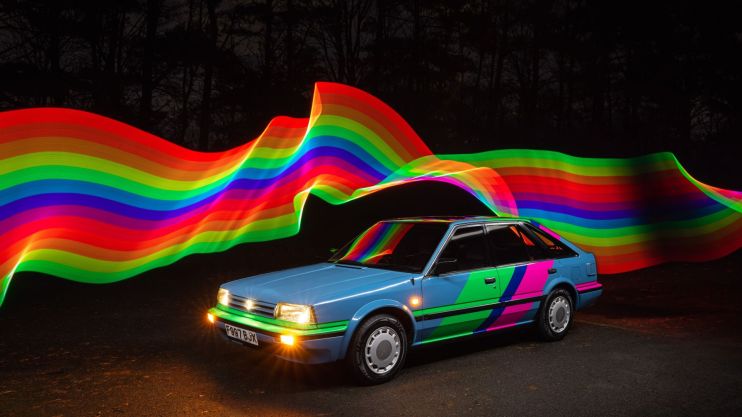Nissan UK celebrates 35 years with restomod electric Bluebird

Nissan has marked 35 years of its Sunderland plant with a one-off electric version of the Bluebird – the first car to leave its UK production line in 1986. The ‘Newbird’ is powered by the drivetrain from a Nissan Leaf.
In place of a four-cylinder petrol engine and gearbox, the 1989 Bluebird hatchback uses the Leaf’s electric motor, inverter and 40kWh battery pack. The battery modules are split between the engine bay and boot to improve weight distribution.
Although it hasn’t been subject to official WLTP tests, Nissan estimates a range of around 130 miles for the Newbird. Zero to 62mph takes an easygoing 15 seconds, with top speed limited by the car’s bluff aerodynamics.
Acceptable in the 80s

The ‘restomod’ Bluebird is recharged via the fuel flap, which now houses a charging port. The battery accepts up to 6.6kW, with the former petrol gauge now displaying the level of charge.
To cope with the extra weight of an electric drivetrain, the Nissan’s suspension has been completely replaced. Other components such as the brakes, power steering and heating have also been upgraded to offer a safer, more comfortable driving experience.
Conversion work was entrusted to Kinghorn Electric Vehicles of Durham, which specialises in electrified classic cars. The Newbird’s exterior graphics are by Nissan Design Europe and ‘inspired by 1980s consumer technology’. An LED-backlit Nissan badge on the bonnet is a more modern touch.
Built in Britain

The original Bluebird wasn’t the first Japanese car built in the UK (that title goes to the Honda Ballade-based Triumph Acclaim), but it proved the efficiency of a British workforce and opened the floodgates for more factories and much greater investment.
Today, Nissan builds the Leaf, Juke and Qashqai in Sunderland. The site produces around 500,000 cars a year, or approximately two every minute, with exports to 132 countries around the world.
Tim Pitt writes for Motoring Research